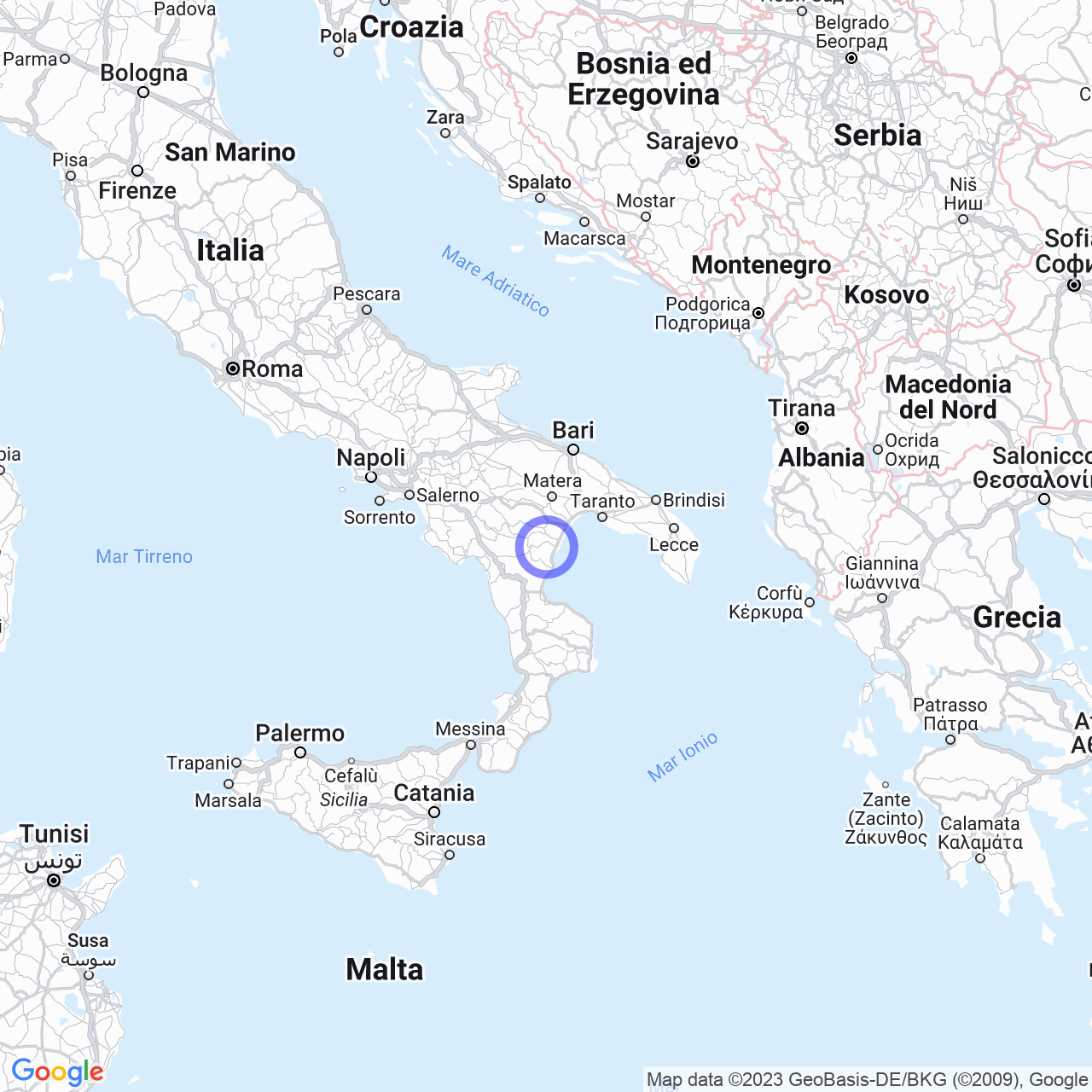Rotondella
Let's explore Rotondella 'a Rëtúnnë': the town on the balcony over the Ionian Sea
Located in the southwestern part of Matera province in Basilicata, Rotondella is a town with a population of 2,444. Its elevated position overlooks the entire Gulf of Taranto, offering breathtaking views. Let's discover together the history and beauty of this gem of Lucania.
Physical geography
Rotondella is located on a mountain at 576 meters above sea level in the heart of Basilicata, a few kilometers from the border with Puglia. It borders the town of Tursi to the north, Policoro to the east, Nova Siri to the south, and Valsinni and Colobraro to the west. Its strength lies in its geographical location, which allows for a beautiful view of the coastline of the Gulf of Taranto.
Moreover, the nearest meteorological station is located in Nova Siri. According to the average data for the 1961-1990 period, the average temperature for the coldest month, January, is +9.4°C, while that of the hottest month, August, is +26.7°C.

History
The territory of Rotondella has been inhabited since the Neolithic period and since then was under the influence of the ancient cities of Siris (Lucania) and Heraclea. Rotondella was mentioned in 1261 as ''Rotunda Maris'', a term derived from its particular position facing the Ionian Sea. The current urban area dates back to the early 16th century under the rule of Ferrante Sanseverino, who built the Baronial Palace, of which only the so-called "Tower of the Prison" remains today.
In the late 16th century, it was invaded by the Ottomans, who took many prisoners of war. In the 17th century, Rotondella saw a demographic increase due to the arrival of neighboring populations escaping malaria. Under the Napoleonic decade in 1806, it became part of the District of Lagonegro, becoming the district capital of Rocca Imperiale, Valsinni, Colobraro, and Tursi. During this period, Rotondella was plagued by brigandage, becoming a target of looting.
In the unification of Italy, the expectations for the allocation of state-owned lands were disappointed, generating strong popular discontent that gave rise to the so-called post-unification brigandage, of which Rotondella was also a victim. Later, the citizens followed the fate of emigration. Apart from a brief period of demographic growth in the 1950s and 1960s, today Rotondella, like much of Lucanian towns, still suffers from depopulation.
Symbols
The banner is a white fabric, while the town coat of arms and the banner were granted by the President of the Republic decree on May 8, 1996.
Monuments and places of interest
The town of Rotondella still preserves its characteristic old town with its typical alleys and houses, along which one can see traces of the historical phases that have marked the country's history.
Among the religious architectures, the Mother Church dedicated to Santa Maria delle Grazie is the center of religious life in the town. Inside, there are wooden statues of the Immaculate, the Madonna delle Grazie, and Saint Anthony. The church of Sant'Antonio da Padova, belonging to the Franciscan convent of the Monastery of the Zoccolanti, is another very important religious architecture in Rotondella.
A visit to Rotondella would not be complete without a walk to the Fountain of the Old Elm, which according to legend was built where there was a centuries-old elm tree under which farmers used to gather to share news and events. It is said that the fountain was erected to commemorate the just-fallen tree.
Finally, we cannot fail to mention the "balcony over the Ionian Sea," from where one can enjoy the spectacular view of the Ionian coastline.
In conclusion, Rotondella (a 'Rëtúnnë) is a gem of Basilicata, and its privileged position on the Gulf of Taranto makes it an ideal place for those who love nature and the tranquility that only this territory can offer.
